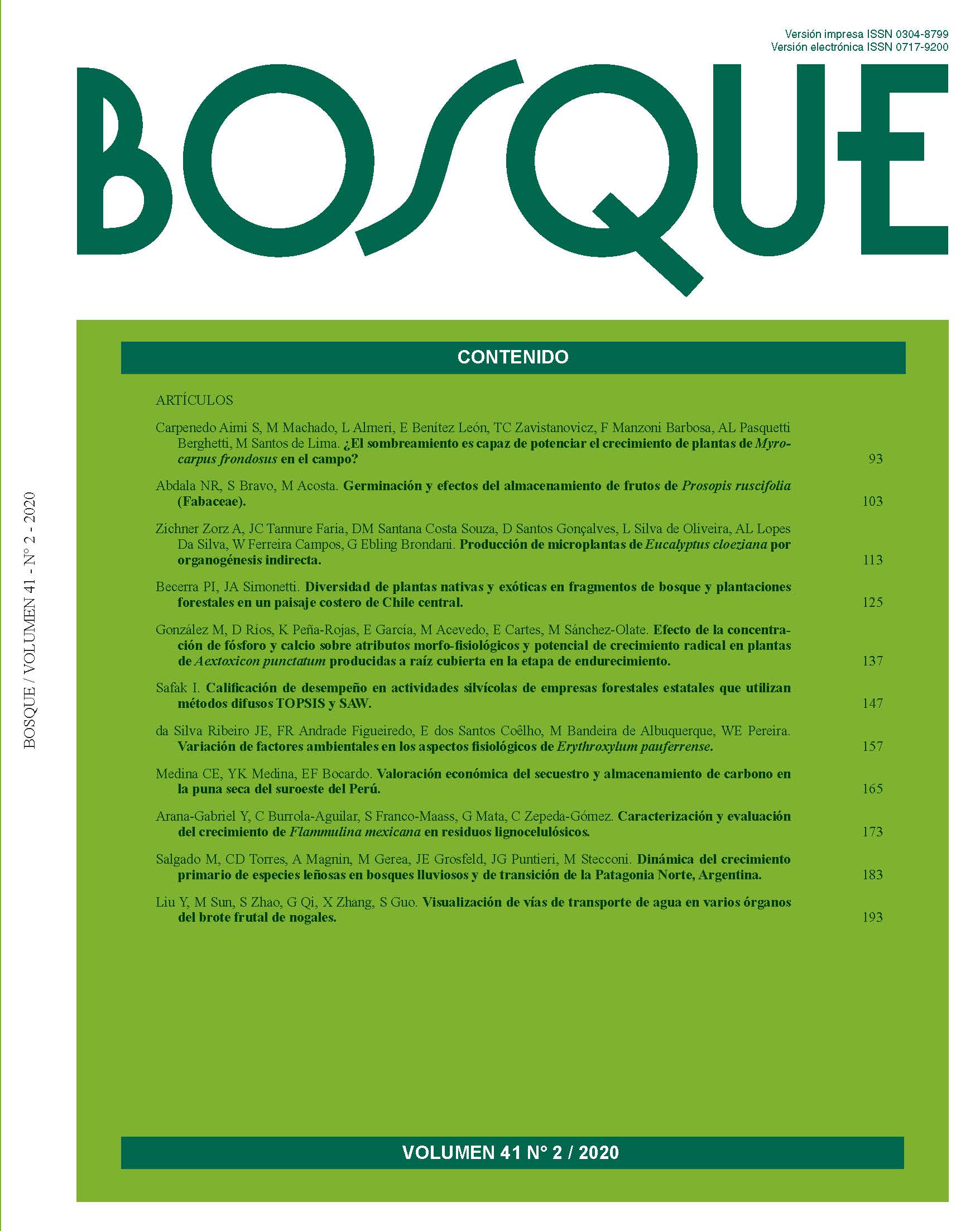Is shading able to potentiate the growth of Myrocarpus frondosus seedlings in the field?
Main Article Content
Abstract
Light is an important environmental factor in the establishment of vegetation. The knowledge of the behavior of the species in response to light demand for survival and growth in the field becomes essential. Thus, the present study aimed at evaluating the survival and initial growth of Myrocarpus frondosus seedlings under different levels of shade in the field. The treatments used were: 0 % (full sun); 18 %; 50 % and 70 % shading in a randomized block design. The survival of seedlings was evaluated 30 and 540 days after planting (d.a.p.) and the morphological attributes height (H), stem diameter (DC) and H/DC ratio every 90 days. Leaf area, leaf dry matter, dry matter of stem and branches and dry matter of shoot were obtained 540 d.a.p. The analyses of the physiological attributes fluorescence of chlorophyll a and photosynthetic pigments were performed 180, 360 and 540 d.a.p. The use of shading in the planting of Myrocarpus frondosus influences the survival and the morphological and physiological attributes of the species. The morphological and physiological attributes of Myrocarpus frondosus plants show that the species requires shading of 50 to 70 % in its initial growth phase in the field (540 d.a.p.). It is recommended to use the species in sub-forest enrichment plantations and in consortium with other species more demanding in light.

